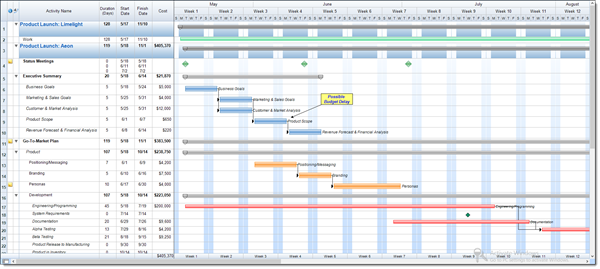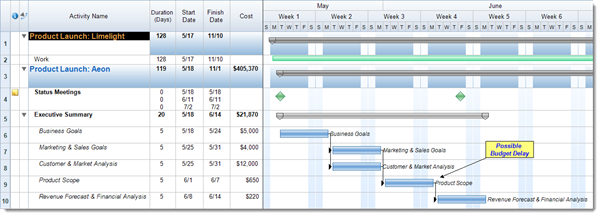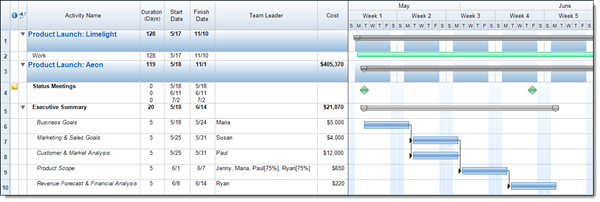 Managing risk is one of those afterthoughts for many of us. We should plan early for it, think of ways to mitigate it, avoid it in certain areas, and help ensure our project’s success by dedicating a chunk of that early project budget to it. In reality, how much time – and on how many projects – do we actually sit down as a team (or as team and customer) and really plan for risk? Seems like planning for when the tire might blow out on our car. We’ll deal with it when it happens.
Managing risk is one of those afterthoughts for many of us. We should plan early for it, think of ways to mitigate it, avoid it in certain areas, and help ensure our project’s success by dedicating a chunk of that early project budget to it. In reality, how much time – and on how many projects – do we actually sit down as a team (or as team and customer) and really plan for risk? Seems like planning for when the tire might blow out on our car. We’ll deal with it when it happens.
I’ve written articles that suggest risk planning and the creation of a Risk Management Plan as a deliverable on all of our projects, but often due to time constraints, budget constraints, and lack of customer interest, it either doesn’t happen or very little time and effort is dedicated to it and it becomes a very short spreadsheet list that is tucked away till later in the project. I’m not proud of it, but it is reality.
Risk management really shouldn’t be a once and done activity either. It needs to be a living, breathing end-to-end project activity. So in what time I do dedicate to risk management on each project I least do this….create a combined Issues/Risks list that becomes part of the weekly project status report and part of the weekly status call and review process. That way, it has all project eyes on it every week and we spend at least some time discussing the potential risks on the project and occasionally adding to it as the project is in progress. Some practical risk management is better than none…definitely.
In lieu of spending a large amount of time on an upfront risk management strategy with a full fledged, fully documented risk management plan, I’ve found that at least performing the following during a 1-2 hour session at kickoff time or during early planning phases can get key risks documented and monitored throughout the project.
Continue reading “Are We Really Managing Risk on Our Projects?”
 Working on the end of the project at the beginning is not the first thing on our minds. At least not mine – I have to make a deliberate effort because all euphoria and excitement is focused on getting the project going well for the customer and getting out of the gate on a positive note. But the good project manager keeps the closeout in mind, as well, even from the outset of the project.
Working on the end of the project at the beginning is not the first thing on our minds. At least not mine – I have to make a deliberate effort because all euphoria and excitement is focused on getting the project going well for the customer and getting out of the gate on a positive note. But the good project manager keeps the closeout in mind, as well, even from the outset of the project.

 You are a busy PM – your project plate full of challenging projects. Yet someone in charge thinks you need to be the one to take over a project – be it troubled, or just in need of a replacement leader. It’s hard to look “weak” and say, “No”, so you smile and nod. Rarely are you given the right of first refusal. They want you on it and you better take the assignment. Does this still sound familiar? I’m sure most of us have been at this point at some time or another. It’s nice to be wanted, but you get that uneasy feeling that your other work and projects may suffer and you may not come out looking good in the end no matter how well you turn things around on the newly assigned project. So accept it if you must, but do it cautiously, efficiently, and wisely.
You are a busy PM – your project plate full of challenging projects. Yet someone in charge thinks you need to be the one to take over a project – be it troubled, or just in need of a replacement leader. It’s hard to look “weak” and say, “No”, so you smile and nod. Rarely are you given the right of first refusal. They want you on it and you better take the assignment. Does this still sound familiar? I’m sure most of us have been at this point at some time or another. It’s nice to be wanted, but you get that uneasy feeling that your other work and projects may suffer and you may not come out looking good in the end no matter how well you turn things around on the newly assigned project. So accept it if you must, but do it cautiously, efficiently, and wisely. Managing risk is one of those afterthoughts for many of us. We should plan early for it, think of ways to mitigate it, avoid it in certain areas, and help ensure our project’s success by dedicating a chunk of that early project budget to it. In reality, how much time – and on how many projects – do we actually sit down as a team (or as team and customer) and really plan for risk? Seems like planning for when the tire might blow out on our car. We’ll deal with it when it happens.
Managing risk is one of those afterthoughts for many of us. We should plan early for it, think of ways to mitigate it, avoid it in certain areas, and help ensure our project’s success by dedicating a chunk of that early project budget to it. In reality, how much time – and on how many projects – do we actually sit down as a team (or as team and customer) and really plan for risk? Seems like planning for when the tire might blow out on our car. We’ll deal with it when it happens.
 Project managers make decisions all the time. It’s part of the job. In fact, it is much of the job. Decision-making is an ongoing task on every project engagement. Key decisions have to be made throughout by everyone including the project manager, the project team members, the customer, executive management, and usually other stakeholders. They may be as simple as when to hold a meeting or as difficult as making a go- no-go decision on a phase of the project or the entire project.
Project managers make decisions all the time. It’s part of the job. In fact, it is much of the job. Decision-making is an ongoing task on every project engagement. Key decisions have to be made throughout by everyone including the project manager, the project team members, the customer, executive management, and usually other stakeholders. They may be as simple as when to hold a meeting or as difficult as making a go- no-go decision on a phase of the project or the entire project. Project management is built around structured methodology – usually – and best practices. There are processes to follow, procedures to implement and documentation to create and deliver. It’s actually pretty structured when you think about it. Or at least it can be.
Project management is built around structured methodology – usually – and best practices. There are processes to follow, procedures to implement and documentation to create and deliver. It’s actually pretty structured when you think about it. Or at least it can be.
 Structured, rigidly adhered to project management principles and practices have their place. No question about it. Be stubborn, stick to your guns, be unwavering. You know the drill. But, from most of our experiences, we know that adhering to that train of thought will only get you so far when you’re dealing with clients who are somewhat vague on what they need you to do for them. They’re relying on your expertise and creativity to guide them down a path that they kind of know they need to be on. At the end of that path may be a solution that they have no idea or concept of – but they’re certainly hoping that you do – or you will soon.
Structured, rigidly adhered to project management principles and practices have their place. No question about it. Be stubborn, stick to your guns, be unwavering. You know the drill. But, from most of our experiences, we know that adhering to that train of thought will only get you so far when you’re dealing with clients who are somewhat vague on what they need you to do for them. They’re relying on your expertise and creativity to guide them down a path that they kind of know they need to be on. At the end of that path may be a solution that they have no idea or concept of – but they’re certainly hoping that you do – or you will soon. It’s OK. Project management isn’t for everyone. It’s interesting, challenging, and somewhat rewarding. I’ll be honest and say it’s more internally rewarding than outwardly so. Success is expected but hard to come by. The target is definitely on the PM’s head if things go awry, but accolades do not come easy to the PM when success happens. It’s more of a team thing. So if you’re looking for the glory, PM may not be it.
It’s OK. Project management isn’t for everyone. It’s interesting, challenging, and somewhat rewarding. I’ll be honest and say it’s more internally rewarding than outwardly so. Success is expected but hard to come by. The target is definitely on the PM’s head if things go awry, but accolades do not come easy to the PM when success happens. It’s more of a team thing. So if you’re looking for the glory, PM may not be it.
 Communication is one of the most critical aspects of managing a project. It must be efficient, effective, and must be managed by an organized leader on a project engagement – and hopefully the project manager is up for filling that communication facilitator role.
Communication is one of the most critical aspects of managing a project. It must be efficient, effective, and must be managed by an organized leader on a project engagement – and hopefully the project manager is up for filling that communication facilitator role.